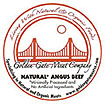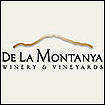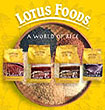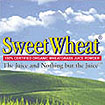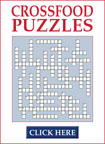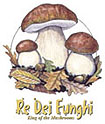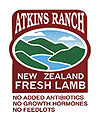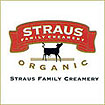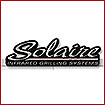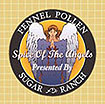What's in your Wine?
Proposal
to require labels to ID presence of allergens
such as eggs, fish, milk, wheat used in
winemaking alarms industry
By KEVIN MCCALLUM
THE PRESS DEMOCRAT
Most folks know white wine goes well with
fish.
Far fewer are aware that wine is often
made with fish.
And milk.
And eggs.
Confused?
That's exactly what the wine industry
says will happen if the government requires
wine labels to state when these and other
potential allergens are used in the winemaking
process.
"If people read, 'This wine contains
milk, fish and eggs,' they are not going
to know what hit them," said Wendell
Lee, legal counsel for the Wine Institute,
the San Francisco-based trade group that
opposes the new rules.
But that's exactly what the federal government,
which is responsible for approving the
labels on alcoholic beverages, is proposing.
It has drafted new rules that require
wine labels to state if the wines are
made with one of eight major food allergens:
milk, eggs, fish, crustacean shellfish,
tree nuts, peanuts, wheat and soybeans.
What's that got to do with the fermented
grape juice?
Everything. Or nothing. It depends on
whom you ask.
Winemakers often use fining agents to
clarify wine before it is bottled. Byproducts
of at least three of the eight allergens
on the government's list are commonly
used in making wine.
They include egg whites; a milk protein
called casein and isinglass, a substance
derived from the inner membrane of the
air bladders of sturgeon.
That's right - fish guts.
No wonder winemakers aren't excited about
printing this fact on their labels.
But their opposition goes beyond just
being worried about grossing out consumers.
They're worried people will be confused
and misled by the warnings.
To say the wines "contain" those
products is wrong because fining agents
are filtered out before bottling, according
to the Wine Institute and other opponents
of the proposed rules.
Fining agents work by bonding with whatever
particles the winemaker wants removed,
such as yeast, bacteria and excess tannins.
This creates a larger molecule that sinks
to the bottom of the barrel or tank and
leaves the wine above it clearer.
"It's kind of like sweeping the wine,"
said Bill Nelson, president of the wine
lobby Wine America. "You're putting
in something that holds onto those particles
in suspension."
Since the fining agents are filtered out
after they do their job but before bottling,
it would be misleading to tell consumers
the wines "contain" those substances,
Nelson said.
But the government is placing the burden
of proof on the wine producers - and brewers
and distillers - to demonstrate their
products don't contain allergens, Lee
said.
That's proving to be a tall order.
While there are proven tests for peanuts,
"there are no such methods available
for testing the presence of eggs, milk,
wheat or fish in wine," according
to the Wine Institute's written comments.
Wheat-based glues are sometimes used to
seal wine barrels, raising the issue of
whether the wine comes into contact with
a wheat product, Lee said.
Anecdotally, the wine industry says there
is no evidence these potential allergens
make it into the final product. If they
did, people would have been having bad
reactions to wine for years.
"In 400 years there's not been a
single documented case of someone getting
a fish allergy (reaction) from wine,"
said Russell Robbins, manager of the Napa-based
U.S. operations of French wine supply
company Laffort Oenologie, which sells
most of the common fining agents used
in winemaking.
The Wine Institute made a similar argument
in its comments.
"Fining agents such as eggs and milk
have been used in wine production for
millennia with few, if any, substantiated
complaints from allergy sufferers,"
it claimed.
Without any evidence of a problem, many
winemakers question why they should go
through the expense and hassle of changing
their labels. Wine America estimated it
could cost wineries $2,000 to $5,000 per
label to redesign their labels.
"I think it's a solution in search
of a problem," said Pete Downs, vice
president of governmental affairs for
Santa Rosa's Kendall-Jackson Wine Estates.
"I kind of feel like its Shakespearean
in nature. It's much ado about nothing."
Others disagree.
The latest debate about allergen labeling
has been brewing since 2004, when a Harvard
University scientist, Christine Rogers,
petitioned the government to add an allergen
warning to alcoholic beverages.
Rogers claimed she was allergic to eggs
and had noticed her own allergic reactions
when she drank wine.
Lawmakers saw sufficient reason to be
concerned, as well.
When they passed the Food Allergen Labeling
and Consumer Protection Act later in 2004,
lawmakers cited studies that showed food
allergies affect 2 percent to 5 percent
of children, send 30,000 people to emergency
rooms every year, and kill 150 people
annually.
Ninety percent of food allergies are from
the eight major groups cited in the law,
lawmakers found.
Proponents of allergen warnings say the
information is critical to helping them
stay healthy.
Fremont resident Catharine Alvarez supports
the new rules for wine because she knows
just how hard it can be to protect her
children from foods they are allergic
to. Alvarez's 4-year-old son is allergic
to eggs, while her 7-year-old daughter
is allergic to peanuts, she said.
While she's not worried about their drinking
wine now, they will someday, and she uses
beer and wine in cooking today, she said.
She thinks wine companies and other producers
have an obligation to be transparent about
how wine is made and let consumers make
up their own minds.
Those who don't care about allergens won't
be scared off by a small warning on the
back label, she predicted. And those who
do care will appreciate the additional
information and feel more confident in
their purchases, she said.
"There are a lot of people I know
who are willing to pay extra for products
that they know to be safe," said
Alvarez, one of 45 people, companies and
trade groups who submitted comments to
the Alcohol and Tobacco Tax and Trade
Bureau, known as the TTB.
The deadline for comments, which was extended
at the request of the wine industry, passed
in December. Federal officials hope to
publish a final rule by the end of 2007,
TTB spokesman Art Resnick said.
Several groups are asking the TTB to hold
off on implementing the proposed rule
until the science of testing for allergens
improves. Others urge patience and a global
approach that allows consistency across
all wine-producing nations.
"A scenario where the exact same
product is being labeled as containing
allergens in one country, but not another
country, serves no interests," stated
one letter signed by eight alcohol groups
in the United States and Canada.
For an industry that touts the health
benefits of its products, yet another
health warning on wine concerns many producers.
Their labels already carry two prominent
warnings.
The phrase "this product contains
sulfites" has been required on most
wine labels since 1986. The naturally
occurring compound is added to wine to
help it age, but some people are allergic
to it and claim it gives them headaches.
In 1988, a surgeon general's warning was
added to alcoholic beverages, citing the
risk of birth defects, impairment of people's
ability to drive, and the catch-all "and
may cause health problems."
Yet another warning worries some winemakers.
Fining agents, while used far less today
than 15 years ago, are still an important
part of the winemaking process, said Nick
Goldschmidt, executive winemaker of Beam
Wine Estates, which owns some of the best-known
Sonoma County wine brands, including Geyser
Peak, Clos du Bois and Buena Vista Carneros.
"We like to be able to have those
tools available to us if we need them,"
Goldschmidt said.
If it comes down to a choice of using
a fining agent that would trigger a warning
or finding another technique, Goldschmidt
said it's too soon to say what he would
do.
"I actually think it's a healthy
conversation for the industry to have,"
he said.





